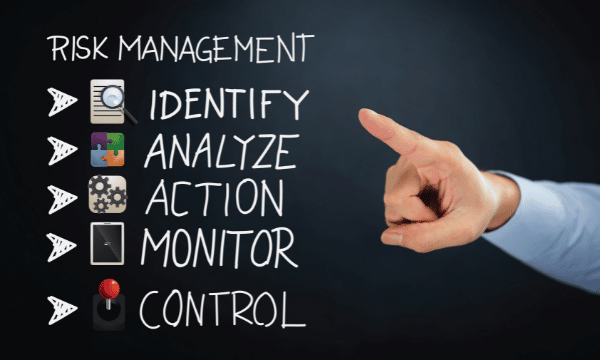How Do You Develop A Positive Health And Safety Culture?
In this article, we answer the popular question “How do you develop a positive health and safety culture” and share our five top tips for promoting it within your company.
The term “health and safety culture” can be construed as a “buzz phrase” and poor health and safety culture is often thought of as a problem in the workforce. In contrast, in line with their research and experience, the Health and Safety Executive (HSE) consider that poor health and safety culture is more likely down to be ineffective management rather than individuals.
This can be down to several factors, including unconscious bias towards production over safety, a focus on short-term measures and quick fixes to safety issues or reactive rather than proactive procedures. If you feel that your organisation does not have the health and safety culture you would like, then you as the owner, director or senior manager are the starting point to change things.

Tip #1:Show that senior management is committed to good health and safety
A good health and safety culture starts at the top of an organisation. If employees are not set a good example by their line managers, they will perceive that there is one rule for them but another for management and therefore resent having to follow safety procedures. One of the best ways to show commitment is to follow your rules, for example, if everyone on the factory floor has to wear Hi-Viz vests then when management visits the workforce they should wear high visibility vests too.
Speaking of visits, make sure that they are actually useful. Talk to front-line staff and gain an understanding of the hazards they face on a daily basis. Check that their level of training is adequate and they have found it worthwhile. Listen to any constructive criticism regarding health and safety and follow up on any actions that you commit to during your conversations with staff.
Commitment to health and safety may also require investment, both in time and money. Be prepared to spend money on appropriate equipment or training and ensure that any plant is properly maintained. One of the most effective ways to keep workers safe is to allow sufficient time to complete tasks. Plan work schedules so that there is enough time to work safely, this will prevent workers from taking unsafe shortcuts to reduce task durations and by working at a sensible pace mistakes are less likely to occur.
Tip #2: Keep your promises
Keeping your promises promotes trust between management and workers which is vital to a good health and safety culture. If you say you will do something, do it, but make sure that workers are kept informed of progress as well, especially if the promise requires a more complex, long-term commitment. It is also essential to ensure that your promises are realistic in the first instance. Workers know the difference between genuine commitments and lip service.
Tip #3: Involve your workers
Legally you have a duty to consult your workforce on health and safety matters. This includes involving them in the production of risk assessments. Make sure you go further than the legal minimum to foster a good health and safety culture. In addition to the more traditional methods such as establishing a safety committee, many companies have successfully used tools such as behavioural safety audits, incentive and suggestion schemes and target-based donations to charity to help promote employee interest in health and safety.

Tip #4: Ensuring good communication between all levels is vital
Make sure that any communication with staff is clear and concise to prevent misunderstanding. Consider which method of communication is best suited to your message. In times of change or when problems arise presentations from senior management together with question and answer sessions may ensure that rumours are kept under control.
If you are implementing new initiatives or ways of working, written communication may be required to back up verbal briefings and also provide a reference source for workers to refer back to. Do not forget that good communication works both ways so establish ways by which workers can give feedback. Whatever method you choose for staff feedback, it must be easy to implement such as an open door policy. Also remember that for constructive feedback, staff must be made to feel comfortable about contributing. Management should keep an open mind, try to avoid cultivating a blame culture (within reason) and respect any confidentiality issues staff may have.

Master Your Safety Skills: Unleash The Power Of Knowledge
Safety is no accident! Elevate your knowledge and stay prepared for any situation. Click the button below to discover our wide range of Health and Safety courses and take the first step towards a safer future.
Tip #5: Employ competent staff with a proactive attitude
Ultimately as an employer, you are responsible for the behaviour, including compliance with safe working practices, of your employees. To give yourself the best chance of success make sure that you employ the right staff in the first instance. Generally, if an interviewee is lacking in qualifications or experiences the situation is fairly easy to rectify through training and supervision. However, if they have a poor attitude to health and safety or work in general, this is harder to address. This situation will not become any easier to resolve once they join your workforce and it may actually lead to the employee having a detrimental effect on the culture in the workplace.
If you have a question or enquiry about health and safety, please call the team on 01452 502113 or complete our enquiry form.
Find this helpful?
Signup to our email notifications to receive alerts when we publish new blogs. We promise not to spam your inbox, you will just get a short snappy intro to Health and Safety articles we think you will love.
"*" indicates required fields

7 Secrets to Risk Assessment
If you’ve got a question or query, please contact our super friendly team, they will be delighted to help you!
Simply get in touch via phone or email.

Free
Resources &
Downloads
Informative. Useful. Practical.
Here at Envesca we believe that we are good at giving proactive, sensible and useful advice. Below you will find some free resources that you can download on a host of subjects that will help you and your business.
Training Available
Envesca offer a number of different training courses, which offer advice and guidance on these topics.






